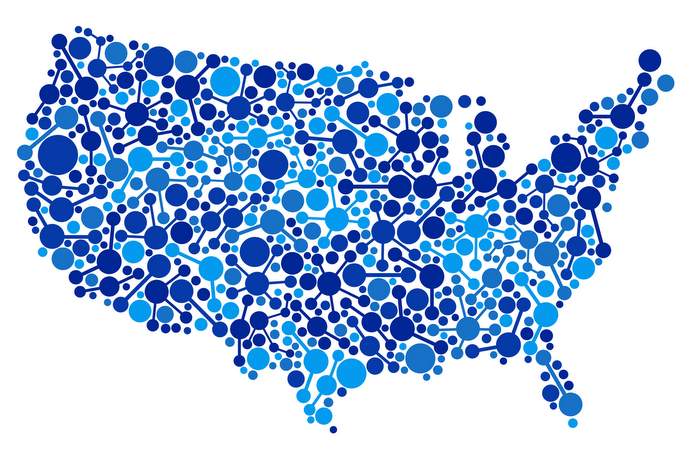It was big news this summer when a federal appeals court upheld Order 841 of the Federal Energy Regulatory Commission. FERC Order 841 clarified that energy storage systems as small as 100 kW (which are interconnected on the distribution grid, under state rules), cannot be barred from participating in wholesale markets. It also directed regional grid operators to remove barriers to participation of energy storage systems (ESS) in these markets.
This ruling, which was lauded by FERC chairman Neil Chatterjee “as the single most important act” in ensuring a smooth transition to a clean energy future in the United States, was certainly an important milestone, but Order 841 is just one piece of the puzzle. It does nothing to overcome another critical policy barrier that is inhibiting the deployment and market participation of energy storage in the United States today: interconnection.
If energy storage is to become a major player in wholesale electricity markets, we will need effective interconnection policies that make it possible to connect these systems to the grid in a timely and efficient manner.
Understanding FERC Order 841
FERC Order 841, a unanimous and bipartisan order, was issued in February 2018 but was later challenged in court by the National Association of Regulatory Utility Commissioners (NARUC), the American Public Power Association and others. They argued that FERC, which has authority over wholesale markets, overstepped its authority by making a rule that affected the distribution grid, which is regulated at the state level.
On July 1, a federal court in Washington, D.C., rejected those arguments and upheld FERC Order 841. As the Energy Storage Association explains, by “directing the regional grid operators to establish rules that open capacity, energy and ancillary services markets to energy storage, the order affirms that storage resources must be compensated for all of the services provided and moves toward leveling the playing field for storage with other energy resources.”
The upholding of FERC Order 841 is noteworthy, but for ESS to participate in these markets they must first be able to connect to the grid, which is a state-level issue outside of FERC’s authority. While states cannot explicitly bar the participation of distributed energy storage in wholesale markets, lack of clarity in the interconnection requirements for these kinds of projects at the state level could still bar their participation in practice.
State-level policy
Every project needs a fair and reasonable interconnection process. Yet, as many Solar Builder readers have likely experienced firsthand, interconnection remains a major pain point in the development of clean energy projects. Around the country, solar, storage and other distributed energy projects regularly face challenges in the interconnection process, such as lack of enforceable timelines for utilities to approve or reject interconnection requests, which lead to project delays and unnecessary costs.
Energy storage faces further barriers to interconnection because it has unique characteristics that are not yet recognized in state interconnection rules. For instance, unlike solar projects, it is possible to control when or if energy storage projects export energy to the grid. Until interconnection rules recognize these capabilities, storage will continue to face high barriers to interconnection approval.
For example, if a utility’s process of studying ESS for interconnection approval assumes worst-case scenarios (such as not accounting for controls that limit the level of energy exported to the grid), rather than the actual way the project will operate, the utility might require expensive infrastructure upgrades that aren’t actually needed and may make projects financially infeasible.
A DOE-funded project led by the Interstate Renewable Energy Council (IREC) is working to develop resources and solutions to improve energy storage interconnection rules around the country. Additionally, California is poised to become the first state to directly address certain energy storage characteristics in its interconnection rules, based on recommendations from IREC and other groups. Illinois and Massachusetts are also actively considering how to reform their interconnection rules to better address ESS. However, there remains significant work to be done around the nation.
Resilience and stability
Recent shortages of electricity and the resulting power shutoffs during heat waves in California are a pointed reminder of the value that storage could provide if these projects could efficiently connect to the grid.
While millions of Californians were left without electricity in record-breaking heat, hundreds of megawatts of energy storage projects were waiting in the interconnection queue for permission. With greater participation of ESS in wholesale markets, regional grid operators like the California Independent System Operator (CAISO) could have called upon ESS to meet California’s electricity needs during the heat waves.
In addition, ESS could also provide valuable demand response services by reducing energy demand during times of peak load. As extreme weather events become increasingly common, the grid support benefits of energy storage will become more and more important.
FERC Order 841 was an important step in allowing energy storage to provide much-needed grid benefits by participating in U.S. wholesale energy markets. But for this potential to be realized, utility regulators around the nation will need to take the next step: implementing improved interconnection policies.
Gwendolyn Brown is communications director for the Interstate Renewable Energy Council (IREC). This column originally appeared in the Fall 2020 issue of Solar Builder magazine. Subscribe here for free (print or digital).
— Solar Builder magazine


Leave a Reply
You must be logged in to post a comment.